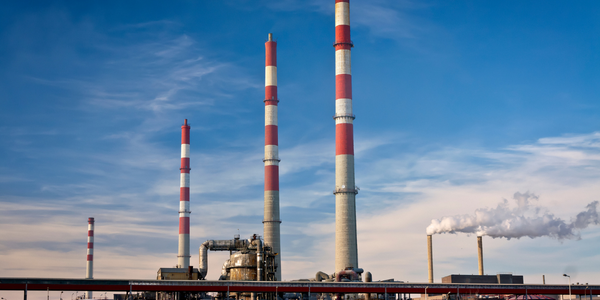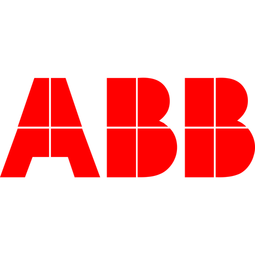Schneider Electric

概述
|
总部
法国
|
成立年份
1836
|
公司类型
上市公司
|
收入
> $10b
|
|
员工人数
> 50,000
|
网站
|
股票行情
Euronext: SU; OTCMKTS: SBGSF; OTCMKTS: SBGSY
|
推特句柄
|
公司介绍
施耐德电气是全球领先的配电设备以及工业控制和自动化设备制造商。公司帮助发电机配电;为汽车和水处理行业设计自动化系统;为能源、水处理、石油和天然气以及海洋应用建立电力网络和公用事业管理系统;并管理住宅、工业和商业建筑中的电力。成立年份:1836 年收入:260 亿美元(2014 年) EPA:SU 特色子公司/业务单位:- Avantis - Wonderware
物联网解决方案
通过广泛遵守开放标准(例如以太网)和数据聚合中间件领域的技术突破,推动了最近的物联网(IoT) 势头。施耐德电气在每个物联网驱动的智能生态系统层提供开放的、连接的解决方案:连接的、分散的设备层(传感器、驱动器、仪表、PLC、控制、开关设备)、平台层(云服务、中间件、物理基础设施架构)、和本地中央控制层(运营智能、远程监控、预测分析、模拟、云分析)。施耐德电气工具通过整理堆积如山的数据(消除误报或误报)以及生成整合来自扩展网络所有部分的信息的仪表板,帮助数据中心、工厂和智能电网运营商提高效率。代替僵局,创建了顺畅的信息流,从而实现更高的运营智能和更高质量的决策。物联网正在扩大需要电源保护和安全的范围,因为整个通信链可能会因单个设备的故障而中断。施耐德电气利用物联网和大数据的力量,通过高精度自动化和控制、培训和模拟、“假设”场景的生成、强大的远程管理、预测性维护、托管服务和高级分析,最大限度地提高安全性和可靠性。电源保护和网络安全考虑嵌入到我们的产品设计中,以加强整体网络可靠性。
主要客户
指南针、新克莱德、TierPoint、壳牌。
子公司
物联网应用简介
Schneider Electric 是平台即服务 (paas), 应用基础设施与中间件, 分析与建模, 功能应用, 网络与连接, 处理器与边缘智能, 传感器, 自动化与控制, 执行器, 其他, 基础设施即服务 (iaas), 和 网络安全和隐私等工业物联网科技方面的供应商。同时致力于农业, 建筑物, 水泥, 化学品, 建筑与基础设施, 电网, 食品与饮料, 生命科学, 海洋与航运, 金属, 矿业, 石油和天然气, 造纸, 药品, 塑料, 回收与废物管理, 可再生能源, 和 公用事业等行业。
技术
用例
功能区
行业
服务
技术栈
Schneider Electric的技术栈描绘了Schneider Electric在平台即服务 (paas), 应用基础设施与中间件, 分析与建模, 功能应用, 网络与连接, 处理器与边缘智能, 传感器, 自动化与控制, 执行器, 其他, 基础设施即服务 (iaas), 和 网络安全和隐私等物联网技术方面的实践。
-
设备层
-
边缘层
-
云层
-
应用层
-
配套技术
技术能力:
无
弱
中等
强

Supplier missing?
Start adding your own!
Register with your work email and create a new supplier profile for your business.
实例探究.
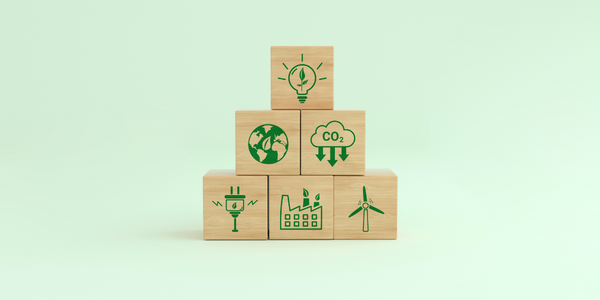
Case Study
Energy accountability brings LEED Platinum certification
Earth Rangers was looking for partners who could donate equipment and expertise. After earning LEED (Leadership in Energy and Environmental Design) Gold for New Construction certification, Earth Rangers decided to further demonstrate their commitment to reducing energy use and CO2 emissions by pursuing a LEED Platinum for Existing Buildings certification—the highest level of certification offered under LEED.
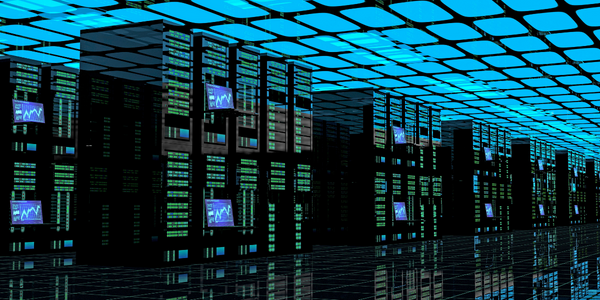
Case Study
Data meets nature: One of the greenest data centers
Green Mountain is consuming data at an unprecedented pace: 3 billion Facebook videos viewed daily; 300 hours of video uploaded to YouTube every hour. In today’s data-driven world, the uptime of colocation data centers – vast banks of servers that process everything from online videos to financial assets – is essential. Delivering secure and reliable data center services can come at an environmental cost though: energy use in data centers today contributes to 2% of global CO2 emissions. They want one colocation facility, built in a former NATO bunker buried deep within a mountain, turn the tables and use the power of nature to become one of the world’s most reliable and sustainable data centers.
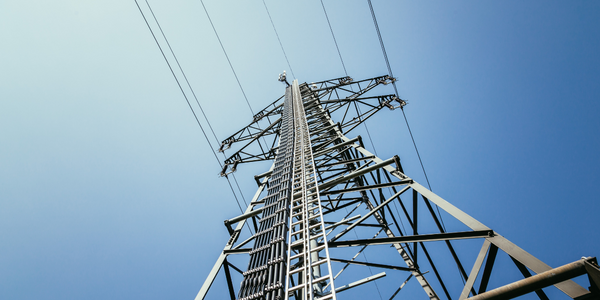
Case Study
Citywide Smart Grid Solutions in Lyon
Standardize and showcase a fully operational smart grid for widespread deployment of proven innovative solutions and provide the basis for:• New business models for prosumer• Investment strategies for the French power system to incorporate the latest technological innovations• Transition scenarios to facilitate the evolution of the current network towards a smart grid system• Implementation of findings from multidisciplinary research on optimal technological and economic choices

Case Study
Innovative IoT Solution for Aquaculture Waste Management by Blue Ocean Technology
Blue Ocean Technology, a company specializing in aquaculture waste management, was seeking an innovative solution to optimize their systems that convert fish sludge into valuable fertilizer. The company aimed to construct a compact system that would minimize both their environmental footprint and power consumption. They also wanted to remotely monitor the drives and motors that manage the pumps in their system. Ensuring the cybersecurity of their plant was another significant challenge they faced. The company was in need of a solution that would not only meet these requirements but also enhance their profitability and sustainability.

Case Study
Somic Group: Doubling Output and Reducing Space with IoT
Somic Group, a machine builder in the packaging market, was facing several challenges. They were seeking ways to reduce costs and react more quickly to customer requirements, while also improving their service business. The market was demanding more innovative, intelligent, and smarter machines, and Somic wanted to meet these demands by building compact, high-performance solutions that incorporated preventive maintenance with an augmented reality interface. Their customers were looking for reliability, production security, and high availability in machines, which were also priorities for Somic. They aimed to deliver all these features while maintaining a compact technology footprint.
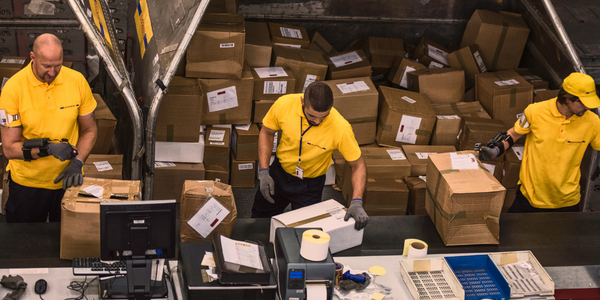
Case Study
Digitization of Pharmaceutical Packaging Machines: A Case Study of CVC Technologies
CVC Technologies, a leading manufacturer of pharmaceutical packaging machines, was seeking an end-to-end IoT solution to fully digitize their pharmaceutical liquid filling and capping machines. The company aimed to enhance the safety of their equipment, introduce digital maintenance capabilities, and gain visibility into machine status from anywhere at any time. The challenge was to find a solution that could provide real-time visibility into the machine's status, deliver direct cloud connectivity and digital services, and simplify all aspects of the machine's lifecycle, from engineering to maintenance.
Case Study
Innovation stays at Hilton
Hilton wanted to meet a critical need in a city looking to further boost tourism: offer an affordable four-star, focused-service option in an area saturated with five-star offerings. However, Hilton had to answer some tough questions: How could they keep operations lean and efficient? To what extent could they control energy costs? Would they be able to meet tight development timelines and still ensure the facility met their sustainability standards? And, most importantly, could they do all of this and still deliver an exceptional guest experience? The hotel was constructed on a tight timeline and included the added challenge of achieving certification in the LEED building program, the most widely used green building rating system in the world.
Case Study
Tata Power's Digital Self-Healing Grid Revolution with EcoStruxure™ Grid
Tata Power, a leading utility provider in India, was faced with the challenge of restoring power to 350,000 households within seconds. The company identified two major challenges in delivering reliable power: unknown theft areas (commercial losses) and improper quantification at the point of occurrence due to lack of real-time data, and operational flexibility with a rigid and evolved grid that was overutilized and had increasing power demand with poor power demand planning. The goal was to develop a robust supply network that could support growth in the customer base, minimize revenue losses, and dramatically reduce restoration times.
Case Study
A sweet success: Maximizing sugar mill efficiency with EcoStruxureTM Plant
The Pongola sugar mill, operated by South African food manufacturer RCL Foods, was in dire need of modernization. The proprietary system was almost 30 years old and the plant used to experience between 33 and 40 blackouts per 39-week season. The production delays became unacceptable and a drop in product quality was noticeable. RCL Foods was looking for an off-the-shelf solution that could be expanded over time and that would optimize production efficiency – a scalable system (both hardware and software) that was easy to operate and allowed for remote access. The company wanted to reuse the existing infrastructure where possible, so the new solution had to be both future-proof and backward compatible.
Case Study
Aquapolo: Enhancing Water Security and Efficiency with IoT
Aquapolo, Brazil's largest wastewater treatment plant, was faced with a significant challenge. The local community was experiencing a severe shortage of potable water, and there was an increasing demand for water for industrial use. Aquapolo was tasked with managing 20 different Key Performance Indicators (KPIs) related to water quality and quantity. The plant also needed to reduce production costs and improve operational efficiency. The challenge was not only to meet the immediate water needs of the community and industry but also to ensure sustainable and efficient water management for the future.
Case Study
Livetech's Efficient Robotic Packaging Systems: An IoT Case Study
Livetech, a company that designs and manufactures robotic packaging systems for the food industry, was facing several challenges. The company needed to reduce the changeover time of its machines to enable faster time-to-market for its mechatronic module machines. Additionally, Livetech was seeking ways to optimize energy consumption of its machines to make them more sustainable and efficient. The company also wanted to reduce the physical footprint of its machines without compromising their performance. These challenges required a high-performance digital solution that could enhance the efficiency and sustainability of Livetech's robotic packaging systems.
Case Study
Creating a life-saving environment through the IoT-enabled EcoStruxure architecture and platform
Nemours Children’s Hospital (NCH) in Orlando, Florida is a renowned, state-of-the-art hospital that provides care for children with the most-complex illness and diseases. The hospital is just five years old but already, families seeking world-class pediatric care have come from more than 70 different countries. For hospitals, a pure, continuous source of power in a healing environment is essential. It not only provides reliable electricity for equipment to function 24/7, it also provides staff, patients, and parents with the constant peace-of-mind necessary to maintain a successful recuperation environment. Electricity is the fuel that runs the hospital. To create the power system at Nemours, the hospital called on a team consisting of Schneider Electric EcoXpert and other technology partners. Through collaboration, innovation, and expertise, these four firms combined resources to make the Nemours vision for reliable power a reality.
Case Study
Healthcare goes high tech. How Huashan Hospital North’s digital transformation increases reliability with connected EcoStruxure™ solutions
Huashan Hospital North at Fudan University, a leading healthcare facility in China, was facing several challenges. The hospital was constructed under technological and budget constraints in 2012 and was struggling to operate sustainably and reduce energy consumption. Compared to other local hospitals, Huashan Hospital North had poor power visibility and significantly higher energy consumption relative to the number of beds. The hospital's systems were not integrated, meaning they lacked a unified interface for ease of management. There was also no way of detecting potential problems in the power system or identifying hidden dangers in electrical safety that could cause downtime in operations. The logistics staff at the hospital was motivated to improve these conditions and sought out connected technology to create a smart logistics nerve center, better manage their systems, and provide eco-friendly outcomes.
Case Study
Empowering the dream-makers
Animal Logic, an independent Australian company, has been creating digital content, visual effects, and animation for the film and television industries for over 25 years. The company's business is cyclical in nature, with the demands of the productions they're working on dictating how many people they have working for them and how much infrastructure they need. As a result, speed of deployment for their data center environments is critical to their success. Around 90% of the data center houses high-density compute, which is used for the process of rendering images, while the other 10% is high-capacity storage used for production, which houses the images that are generated by that render process. The company needed a data center solution that could meet these unique needs for capacity and delivery.
Case Study
A clear view of power management
Guardian Glass, a leading glass manufacturer, was facing a challenge with its power reliability and efficiency. The company's 750,000-square-foot plant in Dewitt, Iowa operates a furnace at 2,800 ºF to pull approximately 700 tons of glass per day, every day, around the clock. The furnace is critical to the plant’s operation and any shutdown is unacceptable. However, the plant suffered a capacitor bank failure that caused the plant’s power factor to drop below the threshold where the company could claim valuable credits on its monthly energy bills. The loss of savings from the credits persisted for more than two years. Guardian Glass needed to improve its power factor over 95% to receive a monthly credit on utility bills.
Case Study
IoT Integration in Traditional Taverns: A Case Study of Arroka Bar
Arroka Bar, a traditional Basque tavern located in San Sebastian, Spain, is a family-run business that operates six days a week, serving breakfast, lunch, and dinner. The bar's owner, Manuel Herrero, was concerned about the potential for equipment downtime and the subsequent loss of business continuity. The unexpected loss of power could have serious financial implications for the business. Herrero needed to ensure that all refrigerators were running to keep ingredients fresh, the coffee machine was heated up 30 minutes before the first client walked in, and the bar's air conditioning and lighting were working to ensure customer comfort. He also needed to stay alert and ready to solve unexpected issues. Herrero was looking for a solution that would provide remote control of individual electrical devices, insight into the electrical network condition, and notifications in case of issues.
Case Study
Harnessing the power of sugar
Wilmar Sugar Australia, the country's leading manufacturer of raw sugar, operates eight sugar mills in Queensland. The company crushes about 15.5 million tonnes of sugarcane each year, producing more than two million tonnes of raw sugar. Wilmar is also Australia’s leading producer of renewable energy from biomass. The company's Invicta Mill, one of Australia's largest sugar mills, required a major upgrade of its boiler control system to ensure the ongoing safety and reliability of the site’s power production capabilities. The existing boiler control system equipment was reaching its end of life and required replacing. An upgrade was planned to simplify the control systems and embed safety procedures into the system, itself. The ideal solution was a control system that would enable Wilmar to have a complete view of all the factory’s systems in one easy-to-use interface.
Case Study
Padania Acque: A Case Study on Smart Water Management
Padania Acque, a water services provider for 113 municipalities in the Italian province of Cremona, was facing challenges in managing its water supply system. The company was struggling with high water losses, which were significantly above the national average. This was not only leading to wastage of a precious resource but also impacting the company's financial performance. The traditional methods of control and management were proving to be inefficient, leading to operational inefficiencies. The company was in dire need of a solution that could help it monitor and optimize its entire water supply system, and enable it to take predictive actions to ensure reliable and sustainable operations for its customers.
Case Study
RELIABLE: China Unicom Relies on Schneider Electric to Operate Their Hyperscale Data Centers
China Unicom is expanding beyond telecommunications, establishing itself in integrated cloud computing and network connection services. Their plan is to build 12 super-scale cloud data centers and 335 regional data centers throughout China, covering 196 regions and cities. The overall area of these data centers is more than 2 million square meters, containing more than 320,000 racks and with network connection bandwidth of 60T. However, they faced challenges such as insufficient infrastructure support, limited service categories, and scale — inefficient supply chain and immature business models. Perhaps the biggest challenge they faced was the low efficiency of their IT infrastructure operations, putting their goal of running at full capacity 24/7, in the near future, at great risk.
Case Study
Empowering Enel for a bright, connected future
Enel, Italy’s largest power company and Europe’s second listed utility for installed generation capacity, recognized the need for an advanced distribution management system. However, they lacked the internal resources necessary to create mathematical algorithms to enhance distribution management. In the past, some employees tried inventing solutions, but without an adequate technical background it held no scientific value. Their employees were spending too many resources trying to create a solution without solid analysis. Without the analysis, the data meant nothing.
Case Study
Lippulaiva: A Case Study on Intelligent Energy Management
The case study revolves around the challenge of managing energy resources efficiently in a large property, Lippulaiva. The property, owned by Citycon, a top Nordic owner of city centers, had a large geothermal energy plant for heating and cooling. However, the challenge was to reduce CO2 emissions and make the city center the most environmentally responsible and friendly in Europe. The need was to control and optimize energy flows, combining building technology and business information, and continuously monitor all building technology systems.
Case Study
Keeping it green in the logistics industry
Bolloré Logistics, a French logistics giant, is a strong advocate for sustainability and has rolled out its 'Powering Sustainable Logistics' program in 2018. The program aims to reduce the environmental impact of Bolloré Logistics’ activities. As part of this initiative, Bolloré Logistics built the Blue Hub, a green building equipped with an advanced energy management system and other eco-friendly features. However, achieving tangible sustainability benchmarks required to obtain environmental certifications such as Green Mark & LEED was a challenge. The company needed a solution that would help them reduce their carbon footprint and make their operations more energy-efficient.With the effects of global warming felt worldwide, companies around the globe have been trying their best to reduce their carbon footprint. The logistics industry has also followed suit, environmentally friendly packaging and carbon emission reduction of freight shipping are the many ways employed as part of its efforts to go green. Bolloré Logistics wanted to go the extra mile by ensuring that Blue Hub is energy-efficient.
Case Study
DataXion: Enhancing Efficiency and Reducing Energy Consumption with EcoStruxure
DataXion, the largest data center in North Africa, was faced with the challenge of ensuring energy optimization and maximizing energy consumption while achieving a Power Usage Effectiveness (PUE) of 1.6. Given the climate, energy consumption was the primary challenge for this data center. The task was not only to manage the energy consumption but also to provide the best choice of equipment and solutions to implement. The challenge was to find a solution that could provide a safe and consistent power supply, maximize system efficiency, improve energy efficiency within the data center, and provide precise air handling for the proper operation of IT equipment.
Case Study
Efficiency checks in at Hilton
Hilton Worldwide, a global hospitality company with over 4,500 properties, faces significant utility bills, which are its second largest operational expense after labor. These costs equate to 5% of the annual revenue raised. The company is not only interested in cutting costs but also aims to be good stewards of the environment. To achieve its multifaceted efficiency and sustainability goals, Hilton sought the expertise of an energy management specialist with a global presence and comprehensive capabilities.
Case Study
Leveraging advanced technology for more efficient operations
Austin Energy, the eighth largest community owned utility in the U.S., serves more than a million residents in and around the capital city of Texas. The utility’s mission is to convert “big data” into useful information, provide more reliable customer service, and improve energy efficiency, in part by creating a safer, stronger, more resilient power grid. The utility needed to better manage the effects of severe weather, which is the number one cause of power outages, costing the U.S. economy billions of dollars a year in lost output and wages, spoiled inventory, delayed production, inconvenience, and damage to grid infrastructure. In pursuit of its mission, and with the knowledge that an advanced distribution management system (ADMS) enables better operational decisions by integrating millions of data points into a single, simplified user experience, Austin Energy chose Schneider Electric to implement an ADMS.
Case Study
Building a campus of the future, today
Aspiria, an innovation campus in Overland Park, Kansas, underwent a significant transformation in 2019. The expansive campus, which provides world-class workplaces, facilities, and public spaces, required significant amounts of energy to operate and ensure occupants are comfortable. However, Aspiria needed to achieve all of this with a relatively small maintenance staff. The previous occupier of the campus decided to partner with C&C Group, a certified Schneider Electric EcoXpert, to improve the comfort, quality, and cost of its campus. The goal was to maintain low energy costs, identify and prevent energy waste, and maximize operational efficiency.
Case Study
Building the world’s best nutritional business
Mataura Valley Milk, a New Zealand dairy company, aimed to build the world’s best nutritional business that could quickly tailor production to specific customer requirements while guaranteeing the delivery of best-in-class quality products. The company wanted to ensure that its plant can consistently manufacture world-class nutritional products with microbial results well below standard requirements. Over 3,300 Aerobic Plate Count tests were performed during the 2018/19 season to identify colony forming units per gram (cfu/g). Mataura Valley Milk’s highest recorded result was a mere 190 cfu/g, with the accepted limit being 5,000 cfu/g, believed to be a first for New Zealand and indicating that the plant’s critical hygiene areas and processes benchmark performance worldwide.
Case Study
Chais Monnet: Enhancing Comfort and Efficiency with IoT
Chais Monnet, a new hotel located in the heart of historic vineyards, faced several challenges in developing a Building Management System (BMS) and an energy-consumption monitoring system. The hotel, which boasts 92 rooms, 14 apartments, a restaurant, a seminar room, a spa, and a swimming pool, required a system that was not only intuitive and user-friendly but also capable of communicating with all technical batches including domestic hot water, electricity, heating, lighting, and air handling unit. The challenge was further complicated by the need to ensure quality aesthetics of the equipment and the finishing of the wiring and thermostats, to comply with the requirements of a listed historic building. Additionally, the hotel wanted to provide its international clientele with the ability to control comfort parameters from their rooms.
Case Study
Efficiency: Settling the dust
ArcelorMittal, the world leader in steel manufacturing, operates the largest steel factory in Western Europe in Dunkirk. The plant delivers 7 million tons of steel annually for various industries. Ensuring consistent product quality is paramount, and any interruption or equipment failure can be costly. Regular maintenance is necessary to ensure safe working conditions and manufacturing continuity. However, performing maintenance usually means shutting down an entire section of a plant, which can take up to two days to resume normal production. ArcelorMittal needed to address this challenge and gain better control over its dust emissions to achieve greater operational flexibility for a recent equipment modernization project.
Case Study
Energizing the future
Samsung SDI, a global leader in the energy industry, was facing challenges with its power supply. Due to South Korea's centralized power supply systems and geographical nature, long-distance transmission was inevitable. This led to voltage drops causing factory shutdowns about 3 to 4 times a year. Power outages would suspend the running of manufacturing facilities, which could be critical to supply lines of various hazardous materials such as chemicals. It not only took a considerable amount of time to recover the situation but also interrupted manufacturing. Samsung SDI needed equipment that enables reliable power supply. Another challenge was the need for cost reduction. An input voltage of 154,000 V at a production facility causes an instantaneous voltage drop for 10 ms to 50 ms. Most of the machines that read data within 50 ms cost about tens of millions to tens of billions of dollars. Samsung SDI was in need of a UPS that is flexibly-transformable based on on-site conditions, installable into a limited space, and scalable.
Case Study
FASTER growth with efficient colocation solutions
Interxion, a leader in the highly competitive colocation market, is facing the challenge of evolving data centers. These are no longer just data storage facilities but gateways to emerging markets and platforms for business expansion. This evolution requires the deployment of secure IT platforms capable of handling a large amount of real-time data. Interxion needs to provide greater connectivity, more redundancy and power, while aligning with today's environmental and security norms. They also need to stay ahead of the digital curve by providing custom solutions that allow their customers to reach deeper into emerging markets and remain relevant in an ever-evolving digital landscape.
Case Study
A mega-resort ensures sustainability is in the cards
Resorts World Las Vegas (RWLV) was conceived with sustainability as a driving force. The developers aimed to create a new benchmark for sustainable hospitality on the Las Vegas Strip. The challenge was to develop an existing construction project into Las Vegas’ newest megaresort while ensuring sustainability. The resort was built on the grounds of what was once the iconic Stardust resort and casino. It was designed to champion sustainability while providing world-class hospitality to guests. The resort comprises more than seven million square feet of mixed-use space spread out across 88 acres, making remote management capability crucial for efficient operation.
Case Study
Quenching a growing thirst
Kunming CGE Water Supply (KMCGE) services a population of nearly four million residents with its 10 treatment plants, with a total water supply capacity of 1.58 million cubic meters per day, and a water distribution network that stretches over more than 4,000 kilometers. As the city grows, KMCGE must also continue to expand the scale of its water supply. Delivering a safe and stable water supply while optimizing production and operational efficiencies are the challenges faced by most water utilities. To make sure it could support the rapid urban development of Kunming, KMCGE recognized that it needed to leverage the power of digitization to effectively manage its water supply. It sought to tap into the rich cache of available data to coordinate network pipe pressure, the rational distribution of water resources, and better energy management.
Case Study
The sweet taste of digitization
Yunzhibao Foodstuff Co., Ltd., a candy producer in China, was facing challenges due to the manual nature of its production and management processes. The company's operations lacked transparency, and data credibility was compromised due to the handover process between shifts. The company also heavily relied on individual workers, and the inability to capture and accumulate their knowledge and experience was a vulnerable point in Yunzhibao’s operations. The company needed to automate these processes, improve their standardization, and ensure product quality. They also needed to eliminate the 'black box' state of their operations and production, and make all product-related process knowledge transferable.
Case Study
Better black gold
Sinopec Hainan Petrochemical needed to digitize its processes to improve the plant’s operation and maintenance levels. Prior to that, projects often deployed control systems from different vendors which was not conducive to the efficient development, maintenance, management, and upgrade of the systems, and made digital operation and maintenance scenarios, such as centralized monitoring of all field data, seem out of reach. Nowadays, cost along with operational and maintenance considerations have led companies to prefer integrated bidding for joint installations. This was the case with Hainan Refining & Chemical and the reason that they looked for a main automation system supplier with strong engineering capabilities and a complete DCS, supported by a safety system.
Case Study
Building intelligence in and out of water
The Shedd Aquarium, a national historic landmark in Chicago, Illinois, U.S., first opened its doors to visitors in 1930. Today almost 2 million guests visit this national historic landmark annually. The aquatic environments in the original aquarium contain more than 1.5 million gallons of water, including a 90,000-gallon exhibit created in 1971 to reproduce a Caribbean coral reef. Over the years the aquarium has undergone expansions to accommodate other large exhibits, more than doubling its original size to cover 422,000 square feet. A facility this size has multiple challenges with regard to energy use in maintaining diverse environments for visitors, staff, and more than 32,500 aquatic animals. In 2013, decision-makers committed to an ambitious goal of cutting the aquarium’s energy consumption in half by 2020. This commitment to sustainability extends into every part of Shedd Aquarium — from water-conserving exhibits and energy-efficient lighting to green gardens and the food its inhabitants eat.
Case Study
Enabling a 100-Year Vision
Mainfreight, a global logistics giant based in New Zealand, needed a state-of-the-art data center that would meet their current needs and support their growing global expansion. The challenge was to complete the project in three months, from design to implementation. The company's systems have grown as the company has grown, shifting from the use of manual systems into automated systems. This has opened up opportunities for the use of Electronic Data Interchange to automate the way customers transact with them and vice versa. To address organic growth, and to accommodate where the business is moving with the demands on data storage and analytics, Mainfreight constructed a new data center in New Zealand which houses all the necessary infrastructure to provide the platform to deliver those exact types of services.
Case Study
The past and future merge for the ultimate experience with EcoStruxure
The Sofia Hotel, located near the coast of the Sea of Galilee in Tiberias, Israel, aimed to become the country's most sophisticated and advanced hotel using smart technology and the Internet of Things (IoT). The hotel, which is built above an ancient Ottoman structure, wanted to preserve its historic origins while leading Israel in building automation. The project, which began in 2017, was managed by Schneider Electric and Afcon Control and Automation, a master-level EcoXpert partner. The goal was to create a seamlessly responsive smart building that would provide an elevated experience for guests and give management real-time access to building analytics and control over every system.
Case Study
Optimising office space to drive efficiency
Sodexo, a world leader in providing services that improve Quality of Life, needed to expand its APAC office to accommodate more than 200 employees. The new office needed to reflect the company’s progressive work culture, supporting a myriad of working styles such as hotdesking and flexible configuration with both social spaces and focus areas. However, the old office had no visibility on energy consumption levels. The challenge was for Sodexo to achieve workplace sustainability by optimizing energy savings without compromising employee comfort levels. They needed a reliable partner who could deliver a cutting-edge facilities management solution, centered around the importance of sustainability and wellbeing of its people.
Case Study
Zero emissions data center cools servers with gravity-enabled sea water distribution
Green Mountain, a data center located in Norway, aimed to establish itself as one of the most efficient data centers in the world with a Power Utilization Efficiency (PUE) rating of 1.2. The data center, co-developed by Smedvig, Ergogroup, and Lyse Energi, is located deep inside a mountain and abuts a cold water fjord. The challenge was to power the data center with cheap, reliable, low carbon hydropower and cool it with seawater from the nearby fjord, using gravity as a key factor in the distribution of that cold water to the data center. The goal was to build a zero emissions data center cooled by gravity-enabled sea water distribution and powered exclusively on renewable energies.
Case Study
Growth without limits: Digital Realty’s journey to becoming a global leader in colocation
Digital Realty, a global data center partner, is trusted with the mission-critical architectures of some of the top companies in social media, financial services, and health care. As the company continues to increase its footprint, it is of critical importance that everything from system architecture to end-user reporting be consistent across all sites. Employing non-standard solutions from site to site leads to operational inefficiencies and inflated costs. With such a diverse portfolio of customers, standardizing operations globally is a must. They currently provide colocation data center services to a diverse base of US and international companies of all sizes in financial services, cloud and information technology, manufacturing, energy, gaming, life sciences, and consumer products. Its 170 data centers serve more than 2,300 customers in 33 metro markets, across 4 continents. They are poised for quick expansion across Europe and Asia-Pacific, and building a consistent infrastructure will be the key to success.
Case Study
On track to a better city with Premset
The Redfern Substation, a critical part of the Sydney Trains network, was running on aging equipment that needed to be upgraded. The substation, built in 1970, had limited space available for upgrades. The location of the switch room was directly above a platform at a critical station on the Sydney Trains Network, meaning any work would impact the schedule of regular commuter trains. The upgrade needed to be completed within a three-day period, making the logistics for an upgrade even more challenging.
Case Study
Edge computing helps jewelry retail chain set “gold standard” in customer service
Tanishq, a leading Indian jewelry retail chain, was looking to modernize its store infrastructure to better accommodate a growing surge in high-end customer traffic. They needed a new edge computing solution that could be managed remotely without disturbing staff workflow or the customer shopping experience. The store’s supporting IT infrastructure had to be reliable and running at all times, providing staff members with the product information they need at their fingertips, and without delay when a customer is ready to purchase. The company also wanted to incorporate more efficient IT and physical infrastructure equipment across their hundreds of retail stores. Their digital transformation and renovation efforts focused on improving the in-store customer experience while increasing operational savings.
Case Study
ACMA's Journey to Higher Productivity with IoT
ACMA, a Coesia company, is a leading firm in the design and construction of automatic packaging machines for consumer goods. Despite their success, they faced a significant challenge in developing a new flexible, smart, and high-speed automatic feeding system for their wrapping machines. The company needed to ensure faster time-to-market, a smaller footprint, and higher productivity. The challenge was to find a solution that could meet these requirements while also being sustainable and flexible. The company had been partnering with an undisclosed firm for over two decades, implementing their motion control and industrial automation solutions. However, the need for a more advanced solution was evident to keep up with the evolving market demands and to maintain their competitive edge.
Case Study
Improving Sustainability and Efficiency in Cement Production: A Case Study of CNBM
China National Building Material (CNBM), a company responsible for producing one out of every ten tons of cement in the world, was faced with a significant challenge. The company sought to enhance its sustainability and optimize its operations. The primary objectives were to manage its energy usage effectively, reduce operational costs, improve profitability, and minimize environmental pollution. The challenge was to achieve these goals without compromising the quality of the cement produced or the efficiency of the production process.
Case Study
Henkel's Journey to Enhanced Energy Efficiency and Process Optimization
Henkel, a global leader in consumer goods and chemicals, was facing a significant challenge in optimizing its energy-intensive spray drying process in detergent production. The process was not only consuming a substantial amount of energy but also lacked the efficiency required for a streamlined production process. The company was in dire need of a solution that could modernize this process, conserve valuable resources, and contribute to its sustainability goals. The challenge was to find a system that could seamlessly integrate with their existing infrastructure and provide real-time insights for better decision-making.
Case Study
Sophim: Enhancing Production Agility and Efficiency with Universal Automation
Sophim, a manufacturer of natural ingredients for the cosmetics industry, was faced with the challenge of modernizing its automation systems. The company sought to upgrade its legacy automation systems to an Industry 4.0 solution in a managed, low-risk, and agile manner. The new solution needed to provide clean integration of IT technologies, with a particular focus on predictive maintenance. Additionally, Sophim wanted to leverage external engineering expertise without introducing project or solution complexity. The task of implementing this solution was given to Alliance system integrator partner Master Systèmes.
Case Study
Power plant optimizes energy usage
The Ruiping Power Plant, a China-based electricity supplier in Henan province, was tasked with meeting China’s demanding national energy-saving and emission-reduction targets. The management team at Ruiping Power wanted to have the ability of seeing, measuring, and managing energy usage across the entire power plant. They were looking for a reliable partner that could provide an end-to-end solution for managing the utility’s energy usage and reduce costs. The team selected Schneider Electric as their partner of choice to take on the full responsibility of process and energy management.
Case Study
Unleashing the potential of digital technologies to optimize the grid
SICAE Somme & Cambraisis, one of France’s regional electrical utilities, was facing the challenge of optimizing grid management in the face of increasing renewable energy sources and the upcoming installation of Linky smart meters. The utility needed to manage a reliable grid that optimized the use of wind energy and met network stability requirements. They were looking for a partner that could help them implement the latest smart grid technology. The utility was also aware of the potential offered by digitization and was the first French utility to deploy Schneider Electric's advanced distribution management system (ADMS).
Case Study
Connected: Powered for Peace of Mind
Grand Medica, a multi-profile medical center in Novokuznetsk, Siberia, Russian Federation, was created within an existing building that was not originally designed to be a hospital. The project had a tight, 20-month deadline, and the building presented some challenging spatial issues. The design and construction teams wanted an effective, integrated system that covered all the needs of a healthcare facility and would prove flexible enough to support future upgrades and modernization. They also prioritized reliable power and technology that would be flexible and scalable as the facility grew.
Case Study
Connected: Savoring the best of tradition and innovation
Maison Manival, a traditional French bakery located in the heart of the French Alps, was facing the challenge of maintaining the high standards of traditional craftsmanship while ensuring the smooth operation of their modern tools and equipment. The bakery heavily relies on electrical equipment such as ovens and refrigerators. Any electrical failure, such as an overnight power cut to a fridge full of fresh ingredients or baked goods, could result in considerable loss. The founder of Maison Manival wanted to create an efficient environment where artisan bakers could work with greater peace of mind and efficiency. The challenge was to introduce innovation while preserving the tradition of French bakeries.
Case Study
Forging a greener future
ArcelorMittal, the world's largest steel producer, was facing issues with its aging electrical installation at its Train 2 facility in Belval, Luxembourg. The company was looking for solutions to reduce downtime risks, improve safety, and enable energy monitoring. It also wanted to modernize its MV power network in line with its sustainability commitments. The project included retrofitting unused but outdated MV switchgear and disposal of old parts in compliance with environmental regulations.
Case Study
Powering inspired guest experiences
The Renaissance Suzhou Wujiang Hotel, located at the borders of Jiangsu, Zhejiang, and Shanghai, is the only internationally branded hotel in the area. It provides business travelers, families, couples, and discerning locals with modern and stylish accommodations and expansive and sophisticated event spaces for weddings, corporate functions, and other special events. The hotel must consistently exceed their guests’ high expectations for comfort, ambiance, and safety. As a Marriott International property, the hotel must also manage construction and ongoing expenses, and meet annual energy savings goals. The challenge was to maintain an exceptional guest experience while reducing energy costs through improved efficiency.
Case Study
Innovating climate- positive results
EcoDataCenter, a company focused on sustainability, wanted to build a climate-positive data center at the heart of its HPC colocation in Falun, Sweden. The company needed safe and reliable power management that would ensure customer-server uptime and energy efficiency. The company also wanted to be part of a unique energy ecosystem where it could send surplus, low-grade waste heat to its neighbor, the local biofuel facility and pellet mill. The repurposed heat would be stored in the facility to help it operate in the colder months of the year, ultimately using less fossil fuels to make heating pellets.
Case Study
Improving the health of the power supply network
UCB Farchim, a biopharmaceutical manufacturer located in Bulle, Switzerland, needed to ensure high quality and reliability of power supply for their operations. A single power failure, even of short duration, could alter the manufacturing processes. The company decided to upgrade and digitize their power supply network at both medium and low voltage levels. The upgrade of the power supply network had to be carefully planned and performed to a tight timeline due to the criticality of multiple processes.
Case Study
License to grow business
Kafkas, a Greek retailer and panel builder, was looking to expand its operations into the medium voltage segment. The company was in search of a reliable partner with a product that was well-known in the Greek market and could provide comprehensive support. The company reached out to Schneider Electric and acquired a license to manufacture the SM6 range of MV switchboards. The SM6 switchgear was already known on the local market, which made the choice of the partner easier.
Case Study
Innovating at the source
Danone evian, a renowned brand of natural mineral water, wanted to upgrade its bottling facility to deliver water more sustainably by reducing energy consumption at every stage of production. The key challenge of the project was maintaining the continuity of operations, which meant all modernization work had to be synchronized with just two annual maintenance shutdowns at the site. The company aimed to monitor, visualize, and manage energy use in real time; increase energy efficiency; and achieve sustainability goals.
Case Study
Powering the hospitality experience
Hyatt Regency® Mexico City needed to modernize its power equipment without disrupting the guest experience. The hotel had the infrastructure it needed for daily operations but lacked visibility into the status of crucial power equipment, such as transformers. Without real-time monitoring of the state of the electrical system, the hotel risked power failures that could compromise the guest experience, and the risks only increased as energy demands grew. But the hotel faced another problem — its existing equipment wasn’t designed to guarantee constant power during maintenance or repair activity. Power outages weren’t an option; any type of disruption could negatively impact the guest experience, from the guest staying on the top floor to those attending events hosted in the hotel’s conference areas. To maintain the hospitality experience — and to keep its reputation intact — HRMC needed to ensure reliable power around the clock.
Case Study
Turning waste into green energy
Azalys, a waste treatment plant in Carrières-sous-Poissy, France, needed to modernize its electrical system while ensuring continuous service for local communities. The plant, which serves an area inhabited by almost 300,000 people, treats 125,000 metric tons of waste and produces 40 GWh of electricity per year. The plant incinerates non-recyclable waste and transforms the heat into steam, which is then converted by a turbo alternator into energy. Some of this energy is consumed by the site itself, while the rest is sold to the electricity distribution network Enedis. The health of the electrical equipment is crucial to the plant’s mission. The modernization process had to be as swift as possible in order not to interrupt the service provided to the local communities.
Case Study
Transforming Edmonton’s HSBC Place into a sustainable, future-ready tower
HSBC Place, an office building in downtown Edmonton, was aging and its mechanical and electrical equipment had reached the end of its useful life. The building had no amenities or visual interest, and it was facing competition from other premier office spaces in Edmonton’s Financial District. The building’s new owners, Alberta Investment Management Corporation (AIMCo), and the Epic Investment management team saw an opportunity to transform the building into a modern, sustainable tower that would be relevant for the next 20 years. They wanted to create a building that was not only aesthetically pleasing but also sustainable and equipped with modern amenities. The challenge was to overhaul the building in less than two years and make it compete with other premier downtown buildings.
Case Study
Keeping the trains on track
Queensland Rail operates passenger services throughout Queensland, Australia. It is responsible for nearly 51 million customer journeys each year and about 8,000 km of track. The operator used to experience power system incidents affecting the running of its railway network. With 1.5 million visitors expected to descend on the state for the 2018 Commonwealth Games, a major international multi-sport event, a much more reliable system was needed. To master this challenge, Queensland Rail decided to upgrade its network and install a second substation for its inner-city services at the busy Fortitude Valley station in Brisbane. The location presented an extra difficulty as the available space allowed for just a 24-square foot (7.3 m2) container. As a result, solutions used for the substation needed to be compact, while still able to function reliably, efficiently, and effectively.
Case Study
Sustainability: A leading mega-retailer brings energy savings to market
Carrefour Egypt, a leading mega-retailer, operates in a highly competitive retail market. To differentiate itself, the company focuses on customer satisfaction by improving quality, choice, and prices. As part of its strategy, Carrefour Egypt is committed to sustainable business practices. Jean-Luc Graziato, the country head for Carrefour Egypt at Majid Al Futtaim Retail, implemented a project to reduce power consumption and ensure uptime in about half of all Carrefour stores. The key goals included measuring energy consumption across stores to identify high- and low-performing stores, using insights from energy dashboards and performance reports to continually optimize power usage, ensuring protection against downtime threats, such as equipment malfunctions or power outages, via timely notifications, and maximizing uptime for power, lighting, ovens, refrigerators, and other business-critical assets.
Case Study
Conserving energy and the environment
Veolia Water Technologies, a global provider of water and wastewater services and solutions, was contracted to build a water treatment facility on the Sorrento coast, Italy. The situation was serious as more than half of the population was discharging waste directly into the sea, and the other half into a treatment facility that did not comply with regulations. These challenges drove Veolia to design a state-of-the-art solution for their plant at Punta Gradelle. With sustainability being one of their key values, Veolia’s plan was not only to treat wastewater, but to also do it sustainably, reusing the recovered material for industrial and irrigation purposes. To realize these ambitions, they needed an advanced supervision system that could provide insights for efficient management across the facility as well as individual operating units.
Case Study
Implementing a green clean-in-place process
Nestlé Waters, the world leader in bottled water, operates a factory in Vergèze, France, where it manufactures its iconic Perrier brand. The factory has 13 production lines and an installation comprising several hundred meters of pipes. To ensure the high quality of Perrier water, Nestlé Waters needed a clean-in-place (CIP) process that meets best-in-class standards. Traditional cleaning performed during a period of machine shutdown represented 20% of the working time of the facility and impacted operational efficiency. Nestlé Waters was looking for a solution that would help them win back some time for production while maintaining product quality and compliance with food safety regulations.
Case Study
Making a connected world more efficient
DigiPlex, a leading data center operator in the Nordics, is dedicated to responsible, sustainable growth. However, the power-intensive nature of data centers presents a formidable challenge for the company. As society grows more connected every day, data centers are sources of enormous power consumption. This presents a formidable challenge for colocation providers like DigiPlex in Norway, which seeks to grow in a competitive business environment while being a responsible corporate citizen. DigiPlex views operating green data centers as crucial to business growth and survival. The company believes that in the future, if a data center is not operated in a completely renewable, sustainable manner, it won't survive in the industry.
Case Study
The perks of power visibility
Nestlé Nescafé, the world’s largest soluble coffee factory, faced a significant challenge with unplanned stoppages disrupting production. In one year, the factory experienced eight unplanned stoppages, which had a significant impact on production efficiency and costs. The factory, located in Toluca, Mexico, produces one million jars of coffee every day, and any disruption in the production process can have a significant financial impact. The factory operates 365 days a year, and any unplanned stoppage can impact the reliability of the processes and affect what makes it to grocery shelves. In 2013, Nestlé invested approximately $125 million to expand this plant, increasing production by 40% and making it the largest soluble coffee facility in the world. At this scale, even modest gains to energy efficiency and service improvements translate to sizable cost savings. Improving the reliability of the facility’s electrical equipment would deliver the productivity, efficiency, and maintenance benefits Nestlé sought.
Case Study
Tradition and innovation in perfect harmony
Mulino Marino, a family-run mill in northern Italy, recognized the need to increase its production to keep up with growing demand. The changes in consumer tastes and purchasing behavior in recent decades presented new challenges: How to be more attentive to market demands for more sustainability, traceability, and organics, as well as to increased requests for alternative multigrain and multi-seed flours, which required the development of new recipes, processes, and products. These challenges, coupled with a dearth of experience and expertise amongst the younger generation of workers, highlighted the need to incorporate new technologies. The company’s strong sustainability ethos and its concern for a depleted earth also drove it to invest in energy management solutions such as solar panels, with the rest of its energy requirements coming from other renewable sources.
Case Study
Seamless digitization of light industry
ROSO Automation Technology Co., Ltd. is a high-tech enterprise specializing in the research and development, production, and sales of zipper dyeing production lines. The company faced challenges in digitizing their machines and transforming from simple to smart manufacturing. Traditional zipper production was labor-intensive, incurring high labor costs with low product added value. The company also had to deal with the dual challenges of manufacturing and operation due to its business model of providing operating services to zipper manufacturers. The lack of digital systems in production and operation at the factory led to errors and omissions during material handover, inconvenient management of onsite logistics, and confusion regarding the locations of finished and semi-finished products. There was also no adequate mechanism for managing the dyeing formulas, which are central to the dyeing process.
Case Study
Driving improved efficiency and environmental benefits
The EastLink freeway tunnels in Melbourne, Victoria, run beneath the environmentally sensitive Mullum Mullum Valley, requiring special attention to ventilation of vehicle emissions. The original tunnel ventilation system, commissioned when EastLink opened ten years ago, was designed to expel 100% of tunnel air, including pollutants from vehicles’ combustion engines, through two 45-metre high ventilation stacks. The ventilation system has 24 smaller jet fans which are located within the tunnels to control air flow direction, minimising a piston effect caused by traffic movement in the tunnel, and ten axial larger, 275kW, 690vAC, ventilation fans in the ventilation stacks to draw air up from the tunnels for expulsion at the stack tops. Since the opening of EastLink, the speed of airflows within the tunnels and stacks was controlled in a traditional way - by switching individual fans on and off at pre-programmed times of the day. When switched on, a fan always operated at full speed. This was inefficient, using more electricity than necessary and producing high operating noise levels. It was also causing unnecessary wear and tear on components.
Case Study
Preparing for a fully automated future
Sanwa, a plastics manufacturer in Singapore, was facing challenges due to regional competition, a dwindling labour supply, and rising operational costs. They saw digitalization as the solution to improve factory productivity, develop skilled employees, and dramatically boost energy efficiency. They started their digitalization journey in 2016 with two long-term goals: to digitalize and automate their factories, ultimately achieving zero defective parts per million for their clients. They started a pilot project with a single production cell as proof of concept for all their stakeholders. The first automation phase successfully showed that they could do more with the same manpower, with localized data collection. The next step in 2018 was to link more of such production cells together into a data network. Forming that data network was crucial for Sanwa for it determined all the necessary steps forward. Other than productivity, their chief concern was traceability and transparency—they were losing time and money on dated manual reports.
Case Study
A natural recipe for digital transformation
Granado Pharmácias, Brazil’s oldest cosmetics company, was looking to modernize its traditional manufacturing process to improve production and product traceability. This was crucial for the company to strengthen its brand internationally and continue its expansion. The company had to ensure repeatability in all its production processes and much better traceability of manufacturing information. Any quality issue would result in a product being rejected at the end of the manufacturing chain, affecting output. The company’s management decided to integrate the latest industrial automation into the company’s traditional production process, and began a potentially tricky digital transformation.
Case Study
Pension Fund Colocation Data Center Leverages EcoStruxure IT to Drive Economic Growth
The Retirement Systems of Alabama (RSA), the administrator of the state’s pension fund, operates a state-of-the-art colocation data center facility. The facility's ability to attract clients is dependent upon a solid reputation for maintaining system uptime. RSA staff wanted to make absolutely certain that the facility housed the most resilient power and cooling infrastructure available. They decided to turn to Schneider Electric, not only to provide the necessary hardware, but to also deploy IoT enabled architecture EcoStruxureTM IT to support the deployment of cloud-based monitoring tools. The 44,000 square foot colocation facility hosts a diverse group of customers that includes hospitals and universities from across Alabama, TV stations, courthouses and government services from across the state and even Emergency 911 services, uptime and visibility to data center assets have emerged as top priorities for RSA.
Case Study
Modernizing an airport’s electrical distribution from parking to departure
Geneva Airport, the second-largest airport in Switzerland, has been experiencing an influx of passengers, necessitating its expansion. With only one runway, it serves 15 million passengers annually, a number expected to rise to over 25 million by 2030. This increase in traffic makes it essential to preserve the quality of the passenger experience at the airport. To accommodate its growing demand, Geneva Airport has been upgrading its infrastructure and renovating its terminals, cargo holds, and hangers. Alongside, the airport is improving its electrical distribution system. However, electrical renovation can create disruption, which can be critical in an airport as it not only creates delays for passengers but also impacts cargo and emergency operations where downtime is not an option.
Case Study
Building smarter machines to maximize profitability
Berto Coffee Roaster, a leading company in Indonesia’s food processing sector, recognized a huge opportunity in the local coffee industry and decided to focus on building high-quality coffee roasting machines. However, their existing roasting machine was manually controlled and required a skilled operator to check every step, resulting in a lot of wasted time in the production process. With the arrival of Industry 4.0, the market demanded a fully automated coffee roaster that required minimal operation and low maintenance costs while also increasing production output, quality, and consistency. It became critical for Berto Coffee Roaster to add more value to their roasting machines designed for the export market.
Case Study
Powering homes with greener energy
E.ON, the largest energy distribution network in Sweden, is committed to improving its service level, minimizing network interruptions, and ensuring a reliable, continuous power supply. The company is also focused on making energy distribution more environmentally friendly while maintaining high efficiency and reliability. E.ON's sustainability objectives include becoming fossil fuel-free by 2025 and reducing the risk of greenhouse gas emissions. To move towards a more sustainable, greener distribution network, E.ON decided to explore the possibility of replacing their SF6 gas-insulated switchgear with a more environmentally friendly, SF6-free technology. The new solution needed to comply with the energy transition happening in Sweden, ensure greater personnel safety, and be interoperable with existing equipment.
Case Study
Scaling the Peaks of Sustainability
GreenAlp, the electric distribution network operator in Grenoble, France, serves over 120,000 customers, including residential and electro-intensive industrial customers. The company is committed to being green and innovative, but as a mid-size electrical company, it does not have the capacity for its own research center. It relies on local actors and advancements in the industry. GreenAlp has 6 main electrical substations of 225,000 volts or 63,000 volts which transform into 20,000 volts and especially 750 MV/LV substations. These MV/LV substations have aging equipment that constantly needs renewing. One of GreenAlp’s aims for this project is to learn how it can renew its existing switchgear in the future. Service continuity has been one of GreenAlp’s main challenges. It needs real-time knowledge of the network, which can be challenging.
Case Study
Maintaining powerful connections
Flückiger Électricité, a specialist in electrical installations and engineering based in Switzerland, was looking to expand its services to include maintenance. The company needed a tool to manage this new service offering. They wanted to offer additional services and win new clients without investing in expensive solutions and time-consuming training. One of their customers, watch manufacturer G&F Châtelain, was looking for a maintenance partner. They wanted to choose a company that had set up the electrical installation and could provide visibility into the maintenance schedule.
Case Study
Keeping school in session
The Bainbridge Island School District, located on a beautiful island in Puget Sound, is a 35-minute ferry ride from downtown Seattle, Washington. The district provides a world-class education to 4,000 children in grades K through 12. However, the district's network’s system uptime is often challenged by the inclement weather that often passes over the island. The area experiences many storms with winds that reach 40 to 50+ miles per hour. When that happens, power outages are almost guaranteed. The island is very wooded, so power lines are at risk when trees and branches fall. The district experiences about 10–15 storms per year and these usually generate about 12 power outages a year. Flickering power levels (brownouts) are frequent and these also disrupt the uptime of the critical computer assets. With such a widespread and distributed network to manage, and with limited human resources, the district needed a simple and reliable way to remotely monitor system issues.
Case Study
Playing it cool
Oxford Energy Solutions Inc., a Canadian company, has been designing and building refrigeration equipment for various sectors since 2006. The refrigeration sector is relatively conservative, with many facilities still running systems that were installed 50 years ago. Maintenance is usually done reactively by replacing broken parts like valves and compressors without addressing bigger issues. Oxford Energy wanted to change the way refrigeration systems are built and maintained in line with its ethos of energy conservation and sustainability. The company was looking for a flexible, holistic platform that would enable it to bring its vision of control and integration to the market.
Case Study
Green MV switchgear advances Renault Group’s goal of a more sustainable future
Renault Group, a multinational automobile manufacturer, is transforming its Flins, France factory into the first European circular economy plant dedicated to mobility. The goal is to achieve a negative CO2 balance at the plant by 2030. However, the company faces challenges such as power reliability and cybersecurity. Any power supply failure can cause a major critical event that can have serious consequences for the site’s activity. An outage can cause safety risks, halt the manufacturing process, which can lead to vehicle damage, cause financial losses due to the vehicle damage, and result in late deliveries to customers. In addition, Renault Group must focus on improving cybersecurity because a cyber breach could be devastating to the Flins factory’s operations.
Case Study
Bridging the digital divide
Leading Edge Data Centres wanted to bring stable, reliable, cost-effective connectivity to regional Australia. The company needed a technology partner that could design and build a reliable prefabricated and certified edge data centre, which could be replicated quickly in multiple regional sites around Australia. The team was also looking for a company that could provide a network of engineers to support these sites into the future. A huge challenge for Leading Edge Data Centres is that the distance between its sites makes cost-effective, in-person monitoring almost impossible. Furthermore, most of its sites are greenfield locations, and as a result, power infrastructure is limited. For these reasons, it needed a reliable solution, backup redundancies, and remote access. Leading Edge Data Centres also required an energy monitoring system to accurately track and report in real time the usage of hundreds of customers.
Case Study
Safety and Consistency : CVC Teams up with Schneider Electric for Digital Transformation
CVC Technologies, a leading pharmaceutical packaging machine company, was looking to introduce digitization into their production processes to provide the best manufacturing equipment for customers. They aimed to increase their solutions to customers, reduce downtime, increase efficiency, and minimize human errors. The company was focused on introducing new packaging equipment to meet the changing needs of their customers. Their customers needed a fast and reliable way to contact CVC or the plant technicians if there were any issues with machinery or general problems.
Case Study
Delivering safety and reliability with a climate-smart solution
Wilo Pumps Indonesia was tasked with designing and delivering a full dewatering system to help prevent future flooding events for a mining company. One of the main challenges that Wilo needed to tackle was the lack of access to the site. Its remote location makes inspecting, repairing, and maintaining the pump system extremely time consuming so the ability to monitor and control it remotely was vital. A smart pump and water management system with remote monitoring capabilities would be the answer to the customer’s requirements as it would also reduce operating costs while improving the reliability and security of the mining operation.
Case Study
High-quality power with fast payback
Oracle Corporation, a leading supplier of information management software, required a reliable power system for its thousands of software developers and customers that depend on non-stop, 24-hour-a-day technical support. Power interruptions could result in significant losses in sales and productivity, as well as affecting customers with mission-critical support needs. Oracle's need for reliable power was the driving force behind setting up its own substation, a 13 MW electrical distribution system, and a power management system. The company initially considered purchasing electricity from the local utility at primary voltage, 12 kV, also known as voltage buy-up. However, the utility feeder to Oracle would still be shared with residential and other non-industrial loads, and they would be subjected to several outages per year. Instead, Oracle decided to intercept the 60 kV circuit from the utility’s transmission line that passes over the Oracle campus. Since the 60 kV circuit’s unplanned outage rate proved to be more reliable, at less than one event per five years, and payback was favorable, Oracle’s board of directors approved the project and construction began.
Case Study
Pacific Islands chart a green course with SF6-free technology
EEC Engie, an electric distribution utility based in New Caledonia, has a zero-carbon strategy. The company wants to remove the SF6 gas from its network. The remote island location presents difficult and unique challenges for EEC Engie. New Caledonia is halfway around the world from Engie’s French operations base. This means that EEC Engie not only needs to manage the purchasing part of its business, but also logistics and the complexity of transportation -- all of which must be taken into account in order to be efficient. Recycling SF6 is also complicated in New Caledonia because the island does not currently have channels for reprocessing SF6. The medium has been used in electrical equipment for decades. While it is very effective for insulating and breaking, it is also harmful to the environment because it is a potent greenhouse gas.
Case Study
Schneider Electric Integrates Microsoft Azure OpenAI for Generative AI Solutions in Energy Management
Schneider Electric, a leader in energy management and automation, faced the challenge of enhancing productivity and sustainability through innovative solutions. The company sought to leverage Generative AI to transform its internal operations and empower its customers. The collaboration with Microsoft aimed to create solutions that streamline time-consuming tasks, optimize resource allocation, and improve efficiency. Schneider Electric needed to integrate advanced AI capabilities to stay at the forefront of technological innovation and achieve sustainable growth.
同类供应商.
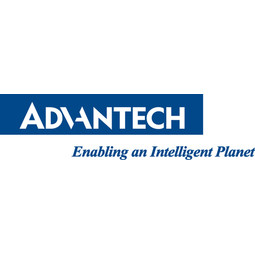
Supplier
Advantech
Founded in 1983, Advantech is a leader in providing trusted innovative embedded and automation products and solutions. Advantech offers comprehensive system integration, hardware, software, customer-centric design services, and global logistics support; all backed by industry-leading front and back office e-business solutions.
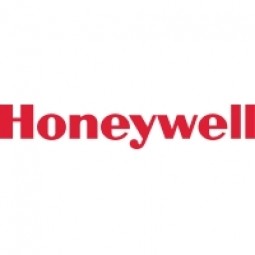
Supplier
Honeywell
Honeywell invents and manufactures technologies to address some of the world’s toughest challenges initiated by revolutionary macrotrends in science, technology and society. They improves business performance for customers with automation and control solutions, equipment and services that enhance safety, reliability and efficiency. Year founded: 1906 Revenue: $40.3 billion (2014) NYSE: HON
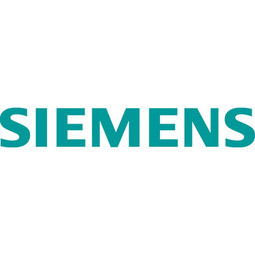
Supplier
Siemens
Siemens is the largest engineering company in Europe. With their positioning along the electrification value chain, Siemens has the knowhow that extends from power generation to power transmission, power distribution and smart grid to the efficient application of electrical energy. Featured Subsidiaries/ Business Units: - Digital Factory - Siemens Technology to Business (TTB)
---nyse--ge_1.jpg)
Supplier
General Electric
GE is a diversified specialty equipment, infrastructure and financial services company. Their products and services range from aircraft engines, power generation, oil and gas production equipment, and household appliances to medical imaging, business and consumer financing and industrial products. GE believes new technologies will merges big iron with big data to create brilliant machines. This convergence of machine and intelligent data is known as the Industrial Internet, and it's changing the way we work. Year founded: 1892 Revenue: $148.5 billion (2014) NYSE: GE Featured Subsidiaries/ Business Units: - GE Digital - GE Predix - GE Intelligent Platform - Wurldtech








